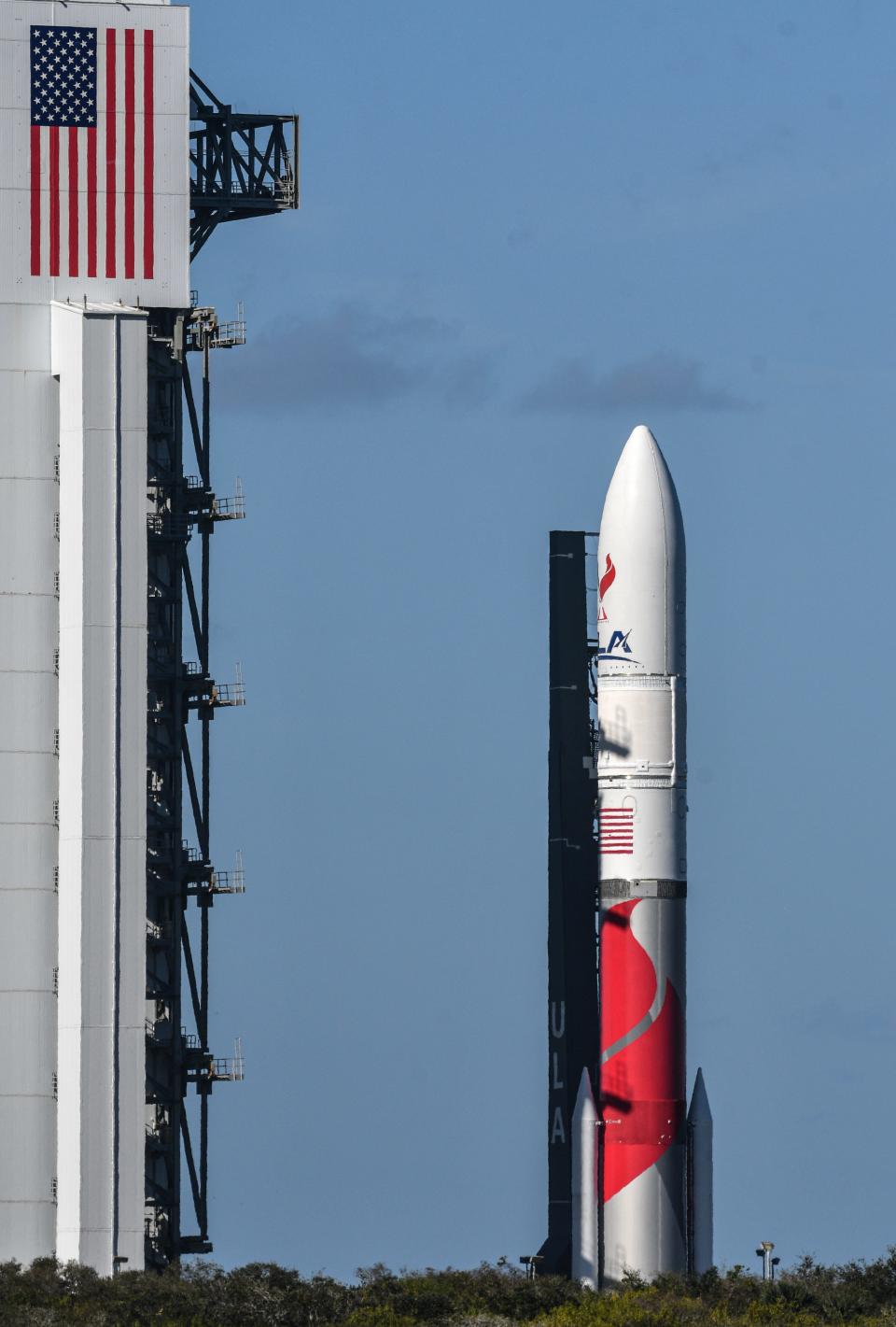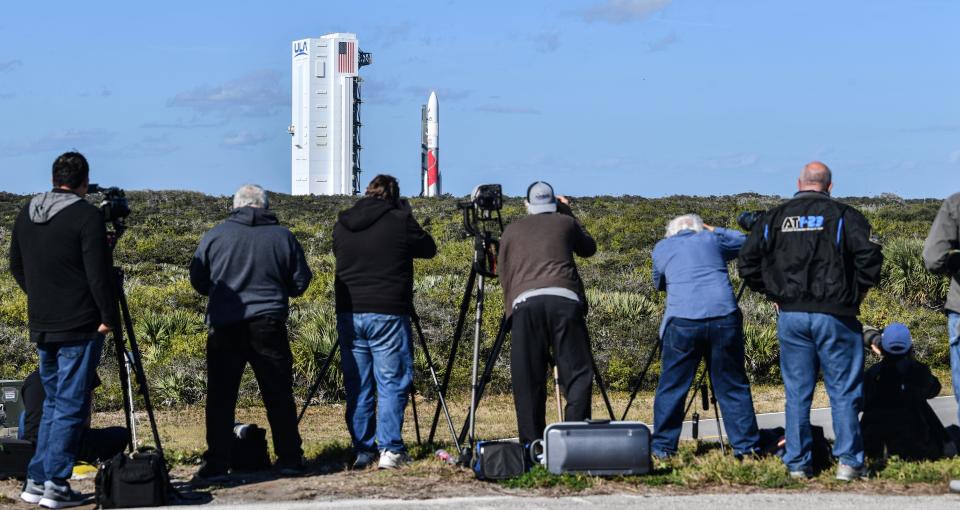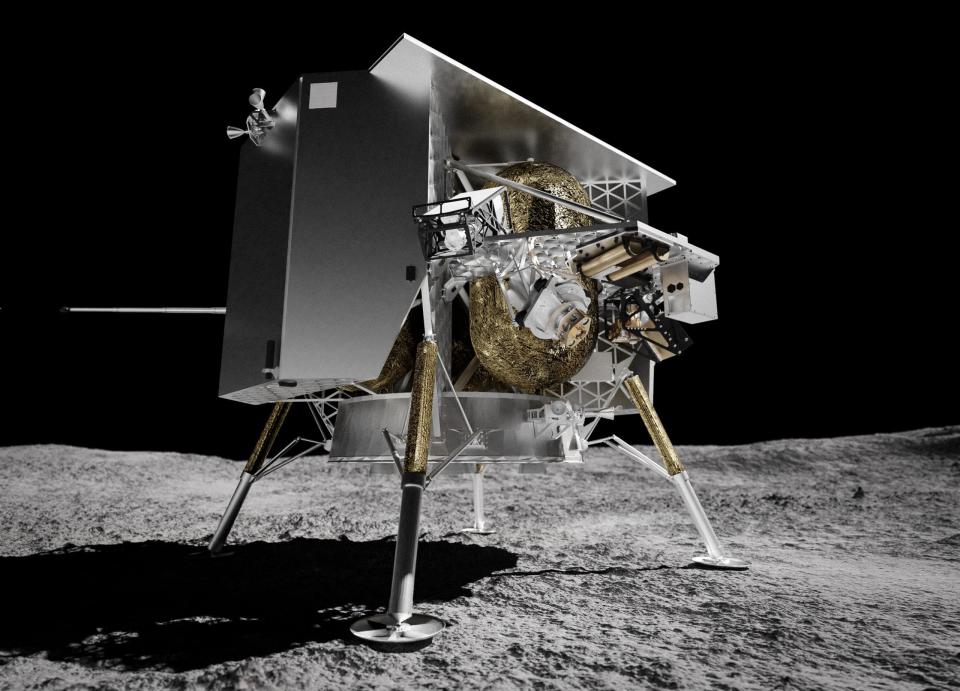Viewer's guide: ULA's Vulcan rocket aims for historic maiden liftoff early Monday morning
The eyes of America's space industry will turn to Florida early Monday morning as United Launch Alliance's next-generation Vulcan rocket soars skyward on its historic maiden test flight, propelling a robotic four-legged lander to the moon's surface.
Engineered with flexibility in mind, the red-and-white Vulcan can be outfitted with zero, two, four or six solid rocket boosters ― adapting for an array of missions “from low-Earth orbit to Pluto and beyond."
Liftoff is scheduled for 2:18 a.m. EST Monday from Launch Complex 41 at Cape Canaveral Space Force Station. Crews are targeting a 45-minute window with six launch opportunities, said Gary Wentz, ULA vice president of government and commercial programs. The company reports an 85% chance of favorable "go for launch" weather conditions.
“It’s terribly exciting. It’s one of these once-in-a-career opportunities for most people. And many people go through their whole career without ever getting this opportunity," Mark Peller, ULA vice president of Vulcan development, said during a Friday pre-launch press conference.
"So, it’s been a lot of hard work. But it’s been tremendously gratifying," Peller said.
Make no mistake: Vulcan's success is critical to ULA's trajectory — as SpaceX has ascended to dominate the Space Coast's unprecedentedly busy launch schedule. Mated with a Centaur V upper-stage booster, Vulcan is slated to replace ULA’s Atlas V rocket and soon-to-be-retired Delta IV Heavy rocket.
And two weeks ago, The Wall Street Journal reported Blue Origin and other suitors are interested in buying ULA.

More: Is ULA for sale? Reports swirl as crews prep for Monday's Vulcan inaugural launch from Cape
Monday's Cert-1 mission marks the first of two Vulcan test flights aimed at earning certification to carry Space Force national security payloads. Wentz said the second certification mission may lift off in April, and ULA hopes to launch six Vulcans by year's end.
Peller told the media ULA has already accumulated an "unheard of" backlog of more than 70 missions before its inaugural flight, and the rocket is “positioning us for a very bright, prosperous future for many, many years to come.”
Wondering if you can see the inaugural #VulcanRocket #Cert1 launch? This visibility map shows when and where your best chances are to see the rocket as it lifts off Monday at 2:18amEST (0718 UTC) from Cape Canaveral.
Launch info: https://t.co/xFQoT0042V pic.twitter.com/t5gofuof1B— ULA (@ulalaunch) January 5, 2024
“It’s the future of our company. ULA was formed and we had the opportunity to fly the Atlas and Delta systems, which have served us and our customers very well. They each had kind of their own unique niches, and we were reliant upon both of them to support these markets," Peller said.
"At the same time, technology continued to move forward. And there was opportunity to develop a new rocket that could do everything Atlas and Delta could do, but do it with even greater performance in taking advantage of the latest technology," he said.
Vulcan launch sequence of events

ULA crews will load about 1 million pounds of methane, liquid oxygen and liquid hydrogen into the rocket's tanks, finishing about two hours before the early morning liftoff.
At liftoff, the Vulcan's rocket’s pair of Blue Origin-built BE-4 main engines and its two white GEM 63XL solid boosters will generate roughly 2 million pounds of thrust, brightly illuminating the darkness.
After clearing Launch Complex 41 and zooming past Mach 1, both side boosters will jettison 1 minute, 50 seconds after liftoff and fall into the Atlantic Ocean. Then the Vulcan rocket and Centaur V upper stage will separate 5 minutes, 5 seconds after liftoff.
Astrobotic's Peregrine lunar lander will separate from the Centaur at the 50-minute, 26-second mark. Vulcan should place the uncrewed lander into a highly elliptical orbit more than 220,000 miles above Earth's surface, gearing up for the spacecraft's Feb. 23 moon landing.
About the Perigrine lunar lander

Perigrine is slated to become the first commercial spacecraft with scientific equipment to settle on the lunar surface as part of NASA's Commercial Lunar Payload Services program.
On board are payloads from seven countries. NASA’s Ames Research Center developed a near-infrared volatile spectrometer and neutron spectrometer system for Peregrine that will look for indicators of ice, carbon dioxide and methane.
Human remains: 'A profound desecration': Navajo Nation asks NASA to delay moon mission with human remains
The lander will also carry Iris, a shoebox-sized, 4.4-pound rover built by Carnegie Mellon University students. The lander should operate on the moon's surface for about 192 hours.
“The Peregrine landing site is an ancient, hardened lava flow — outside of the Gruithuisen Domes, a geologic enigma along the highlands boundary on the northeast border of the Ocean of Storms, the largest dark spot on the Moon,” a ULA blog post said.
“The Domes are suspected to have been formed by a sticky magma rich in silica, similar in composition to granite. On Earth, formations like these need significant water content and plate tectonics to form, but without these key ingredients on the Moon, lunar scientists have been left to wonder how these domes formed and evolved over time,” the post said.
SpaceX Starlink mission set for Sunday
Adding to the mix, a Sunday afternoon Falcon 9 rocket launch should create a SpaceX-ULA launch doubleheader within a roughly 10-hour span at Cape Canaveral Space Force Station.
The SpaceX Starlink 6-35 mission launch window opens at 4 p.m. and lasts until 8:31 p.m., a Federal Aviation Administration navigational warning shows.
For the latest launch schedule updates from Cape Canaveral Space Force Station and NASA's Kennedy Space Center, visit floridatoday.com/launchschedule.
Rick Neale is a Space Reporter at FLORIDA TODAY (for more of his stories, click here.) Contact Neale at 321-242-3638 or rneale@floridatoday.com. Twitter/X: @RickNeale1
This article originally appeared on Florida Today: ULA Vulcan rocket aims for inaugural flight from Cape Canaveral

